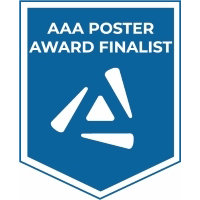Back
ANATOMY
Category: Anatomy
Session: 634 Anatomy: Form & Variation
(634.12) 2D Geometric Morphometric Shape Analysis of Casuarius casuarius (Aves: Paleognathae) Cranial Casques
Monday, April 4, 2022
10:15 AM – 12:15 PM
Location: Exhibit/Poster Hall A-B - Pennsylvania Convention Center
Poster Board Number: C87
Introduction: AAA has separate poster presentation times for odd and even posters.
Odd poster #s – 10:15 am – 11:15 am
Even poster #s – 11:15 am – 12:15 pm
Introduction: AAA has separate poster presentation times for odd and even posters.
Odd poster #s – 10:15 am – 11:15 am
Even poster #s – 11:15 am – 12:15 pm
Todd Green (New York Institute of Technology College of Osteopathic Medicine, Oklahoma State University Center for Health Sciences), David Kay (Oklahoma State University Center for Health Sciences), Paul Gignac (Oklahoma State University Center for Health Sciences, American Museum of Natural History)
Todd Green
Presenting Author
New York Institute of Technology College of Osteopathic Medicine, Oklahoma State University Center for Health Sciences
Presenting Author(s)
Many vertebrates (e.g., chameleons, bovids, hornbills) possess cranial elaborations; however, studies investigating the morphological variation of these structures are rare. For example, the conspicuous cranial casques of modern cassowaries have long been hypothesized to perform a number of functions (e.g., physical ramming, vocalization, thermoregulation, visual display) despite an absence of quantitative methodologies to determine whether ornament shape variation within the group aligns with proposed biological roles. In order to fill this data gap, we compared casque shape between sexes and native geographic regions in a large sample of adult southern cassowaries (Casuarius casuarius; n = 103). We quantified casque shape in lateral and rostral views using elliptical Fourier analysis, ordinated the shape data, and used multivariate analysis of variance to address specific comparisons. We hypothesized that casques would be sexually dimorphic and regionally specific, consistent with proposed display functions. However, we found no significant differences in casque shape between female and male C. casuarius and few significant shape differences between individuals from specific geographical areas. Much of the intraspecific casque shape variation, particularly from the rostral aspect, is due to asymmetries across the midline. In our sample, casques were 77.5% rightward deviating, 20.7% leftward deviating, and 1.8% non-deviating. Although it is unclear if this directional casque asymmetry provides a functional advantage, future studies may elucidate this feature. Altogether, two-dimensional shape analysis does not support a role for the casque as a de facto discriminator between sexes nor regional sub-populations in C. casuarius. These findings stand in contrast to those of other ornamented birds (e.g., Numida meleagris) and potentially point towards alternative biological functions.
2019 New York Institute of Technology College of Osteopathic Medicine (Todd L. Green)
2019 Western Interior Paleontological Society - Karl Hirsch Memorial Grant (Todd L. Green)
2018 American Association of Anatomists - Visiting Scholarship (Todd L. Green)
2017 National Science Foundation - Major Research Instrumentation Grant (Paul M. Gignac)
2016 Western Interior Paleontological Society - Karl Hirsch Memorial Grant (Todd L. Green)
2015 National Science Foundation - Early-concept Grant for Exploratory Research (Paul M. Gignac)
2015 National Science Foundation - Division of Environmental Biology (Paul M. Gignac)
2019 New York Institute of Technology College of Osteopathic Medicine (Todd L. Green)
2019 Western Interior Paleontological Society - Karl Hirsch Memorial Grant (Todd L. Green)
2018 American Association of Anatomists - Visiting Scholarship (Todd L. Green)
2017 National Science Foundation - Major Research Instrumentation Grant (Paul M. Gignac)
2016 Western Interior Paleontological Society - Karl Hirsch Memorial Grant (Todd L. Green)
2015 National Science Foundation - Early-concept Grant for Exploratory Research (Paul M. Gignac)
2015 National Science Foundation - Division of Environmental Biology (Paul M. Gignac)

